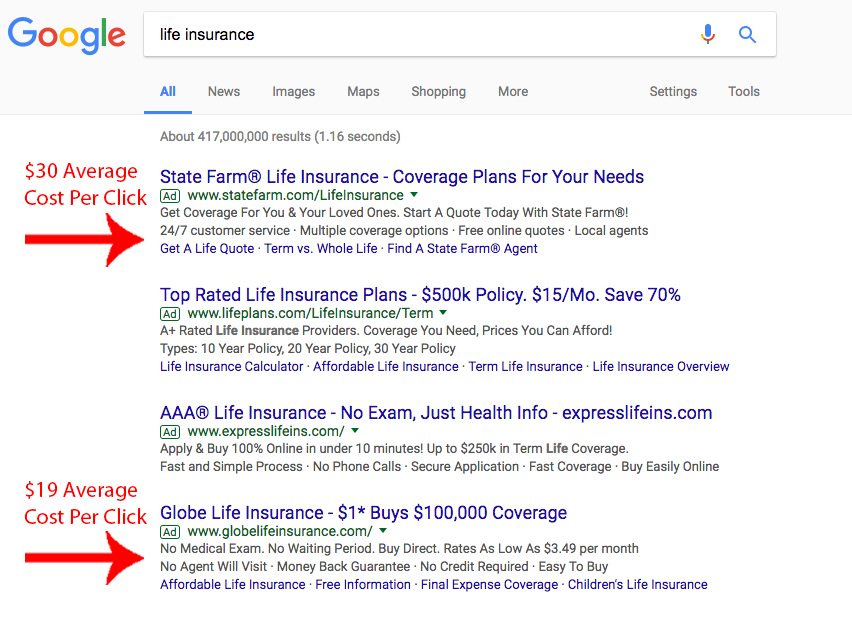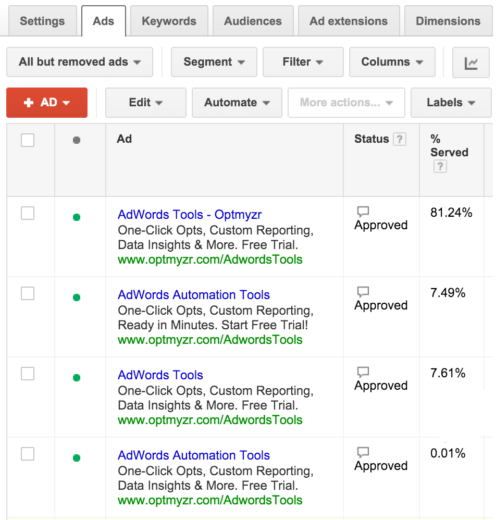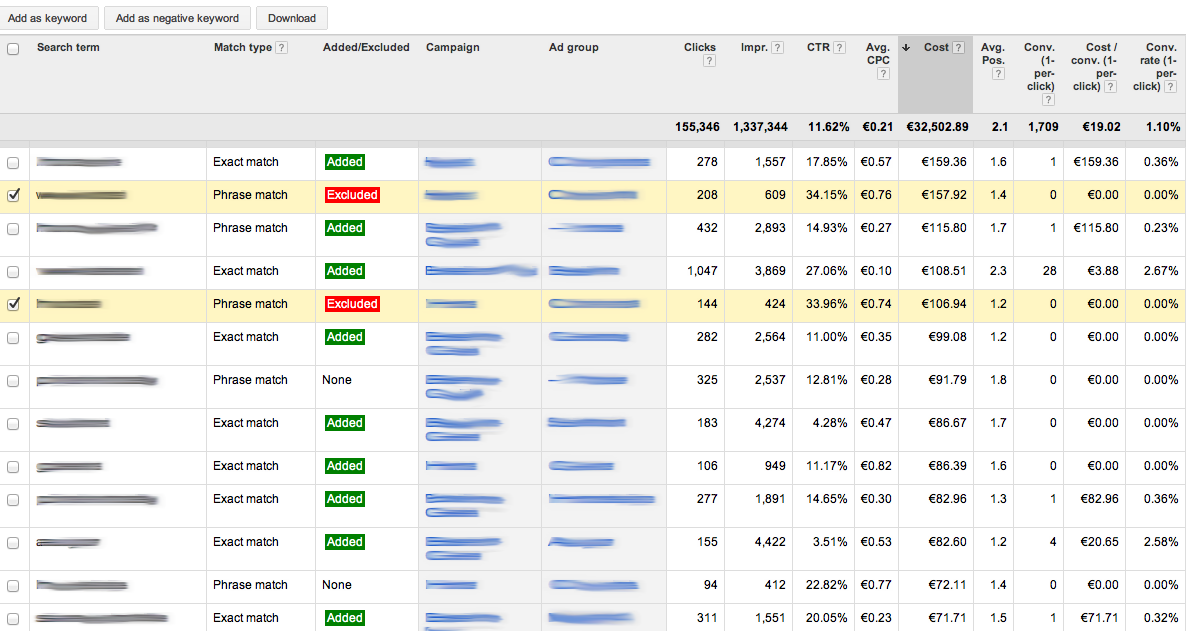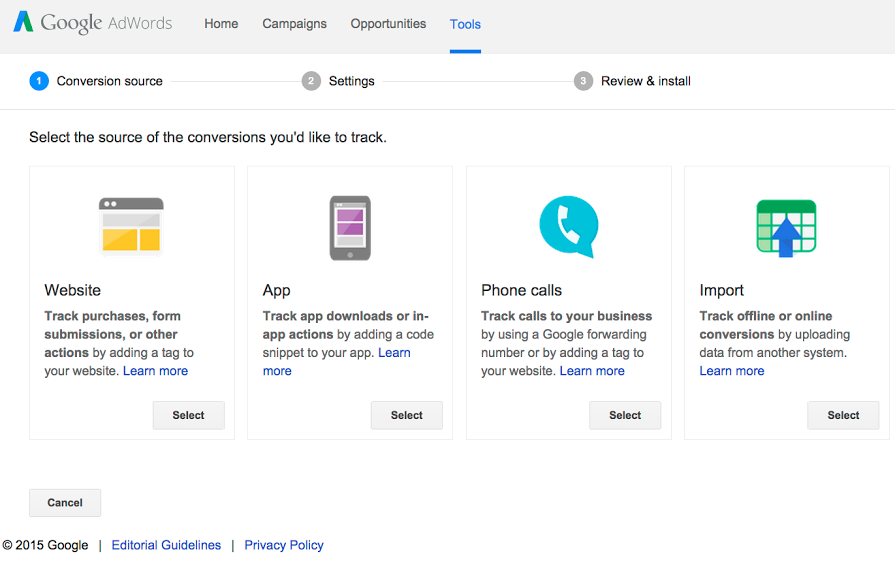AdWords is quickly becoming the best way to drive traffic, leads, and online sales to any website. Most business owners today have at one point or another tried to run AdWords campaigns, and most weren’t met with too much success.
There are a number of great aspects to AdWords, but with so many options and settings, it’s easy to have campaigns spend more than they generate. Getting started in AdWords can be a bit of a trial and error process, but with a few changes, it’s easy to make your campaigns more profitable. Avoid these common mistakes and you’ll soon find your ROI sweet spot.
1. Ad Position
When it comes to ad position most people have the mentality that the #1 spot is always better. Aiming for the top spot is great but depending on your goals being number first isn’t always best.
If the goal of your campaign is awareness then bidding to the top makes the most sense. Being first on the Search Engine Results Pages (SERP) guarantees more impressions, clicks, and more exposure for queries based on your keywords. However, to consistently be at the top of the SERPs you will have to pay a premium. Depending on the industry the difference between the 1st and 4th position can be $10 or more.

However, if the goal of your campaign is to increase sales or profitability the first ad position isn’t the best choice. The first position gets the most clicks, but often people are clicking to decide if the general results they are getting meet their needs rather than the ad copy generating true interest or intent. As searchers scroll down the results they are looking for a better match, and if your ad matches their needs there is a better chance they will convert.
With all that said the best advice on ad position is to test. Depending on your industry being first might be the best because clicks are cheap. By testing, you can find which position is most profitable and which position is best for your situation.
2. Number of Ads
A lot of agencies and business owners have a set it and forget mindset with AdWords management. Once the AdWords campaigns are created one ad is made to run for the duration of the campaign’s life. While it’s fine to run just one ad you miss the opportunity find out if a different iteration of the ad would perform better or increase metrics. Having multiple ads in each ad group is the best way to run an AdWords campaign since different language attracts different users.

While there isn’t an exact number of ads that should be in a campaign a good number of ads to test is around 2-4. Any less than this and you aren’t running enough ads to determine if there are better alternatives to what’s running at the moment. Running too many more ads and you begin to split your data up too small to make any decision about which ad is best. Testing ad copy is critical to having a profitable AdWords campaign.
The number of your ads will be determined by your budget and how much traffic is available for your search terms. Running multiple ads will produce better results and more data faster than running one ad for months to determine success.
3. Keyword Variety
Another common mistake in AdWords is keyword type selection. AdWords gives marketers the ability to use different types of keywords to target different user intent. There are 3 general types of keywords broad match, phrase match or exact match and each is important in attracting users at a point in their buying journey.

All too often when creating accounts people set up campaigns using just one type of keyword. Using a campaign with only exact match keywords will bring in a very narrowly targeted set of users. These users are more likely to convert, but the campaign will drive fewer clicks and miss any potential business where searchers are using more general terms. In comparison, only running board match keywords in a campaign will bring in more clicks and impressions but customers will have less specific buying intent.
When creating a new campaign starting with a few keywords of each type is best, and over time as data accumulates you can add more keyword variety. By adding a variety of keyword types campaigns can attract customers regardless of where they are in the sales funnel.
4. Not Using Negative Keywords
One of the great features of AdWords is its ability to be turned on and off like a faucet. Whenever a business needs a boost, has a new product, or any other specific campaign it’s easy to create new ads to gain traction.While it’s convenient to be able to start and stop campaigns at will, without filtering what comes out the results are less than stellar.
While most people want their ads to grab as many eyes as possible, without negative keywords most of the traffic is low-quality. Negative keywords give you the ability to filter out search queries that historically haven’t performed well, or terms that aren’t representative of your products and services.

For instance, if you run a sports apparel store you would typical have keywords like soccer cleats, baseball gloves, and lacrosse helmets. However, if your store doesn’t carry any golf equipment you would want to add negative keywords like: “golf” “golf clubs” “golf gloves”. By adding these negative keywords you can help prevent anyone searching for golf equipment from clicking on your ads.
5. Not Tracking Conversions
One of the most egregious mistakes in AdWords is not tracking conversions. Whether online or offline tracking sales and leads are paramount to determining the success of a campaign. Without knowing how much money is really being generated it’s impossible to know what methods are working.
When setting up conversions every point of contact needs to be tracked. Too often businesses just measure bottom line sales as conversions and none of the steps in between. If you only measure sales you aren’t considering all the leads, email sign-ups, and phone calls that can be generated through AdWords.

Having a better understanding of what keywords and marketing methods are driving sales can actually save money in the long run. By only focusing on keywords and terms that have proven to create sales and leads you can curb any wasted spend.
AdWords is a powerful tool for generating traffic and sales, but like most marketing methods targeting the right people makes the difference. Using Google AdWords effectively comes down to generating as many clicks as possible among the most relevant audience to your business. By avoiding common mistakes it’s possible to craft a sales funnel that will target the right customer and help to improve sales online and off.
